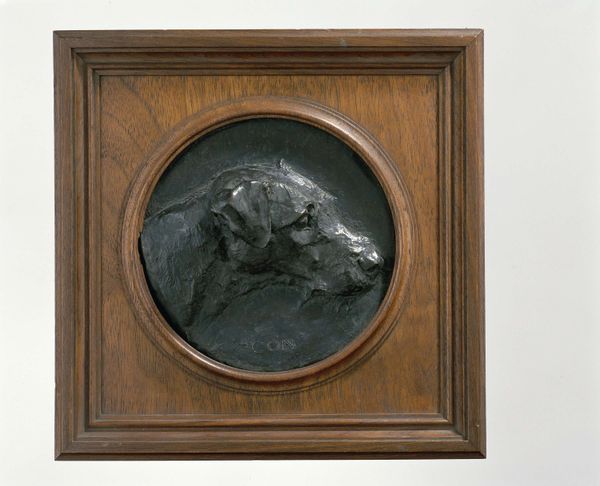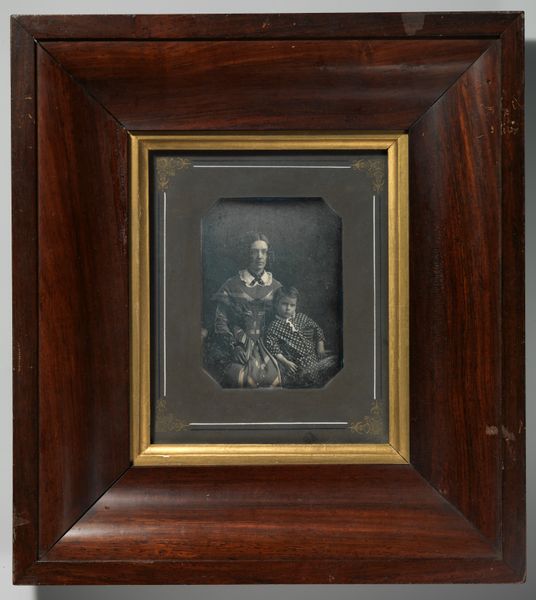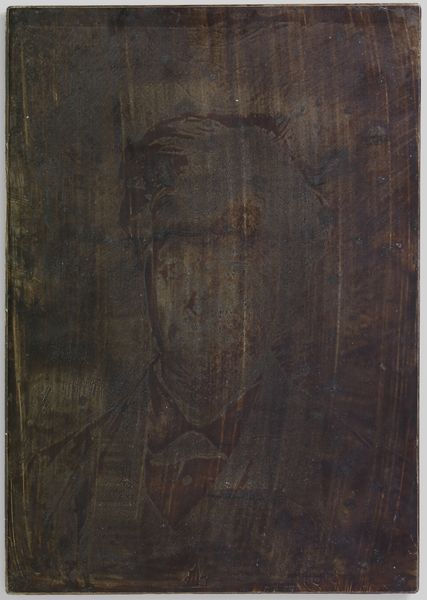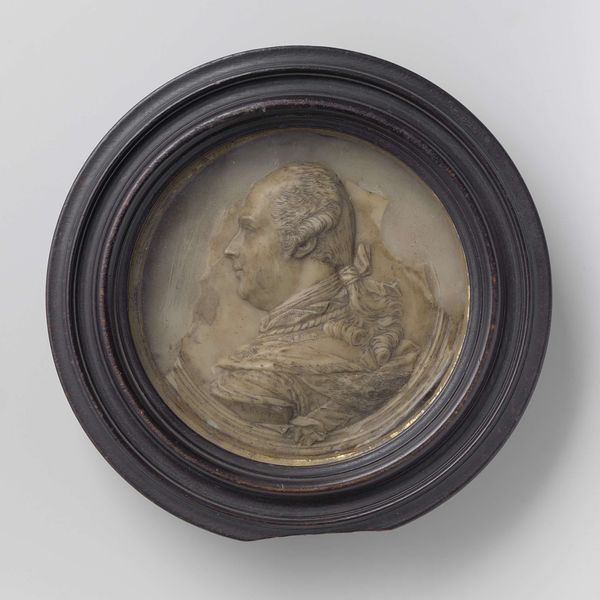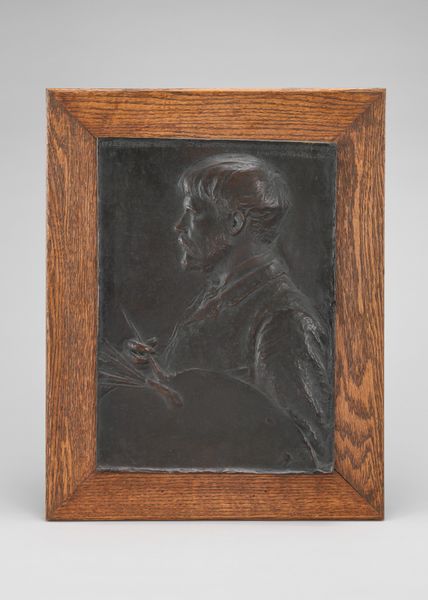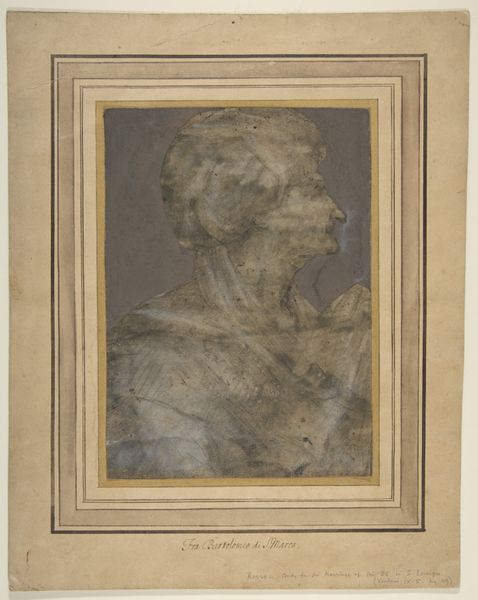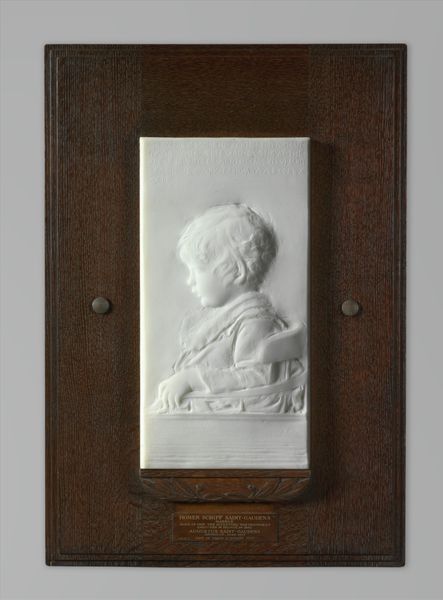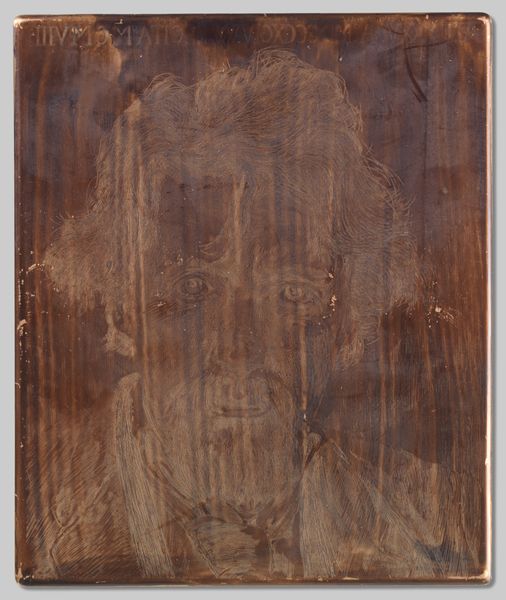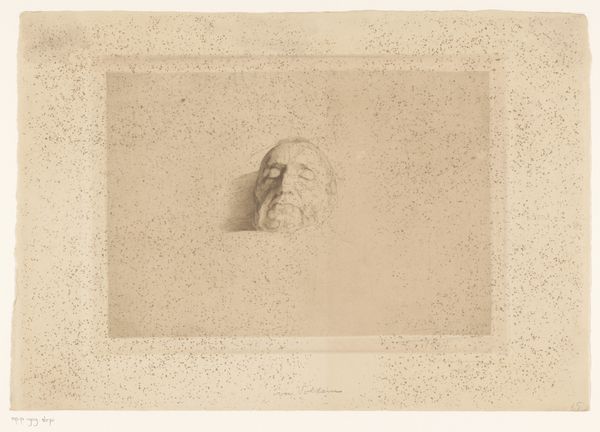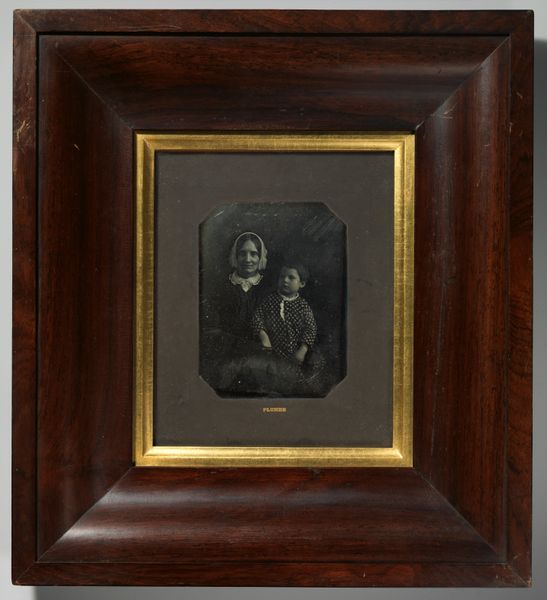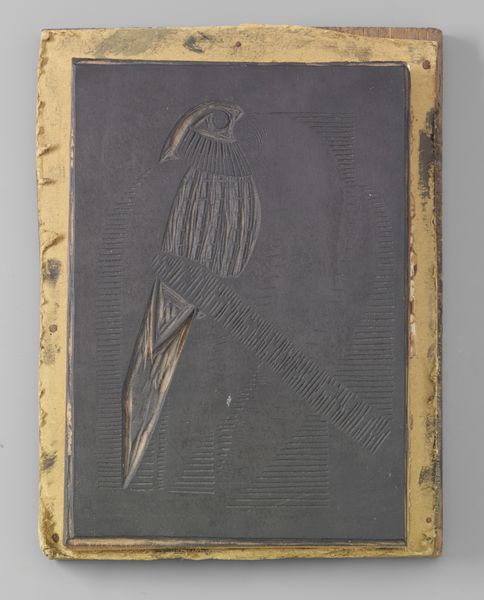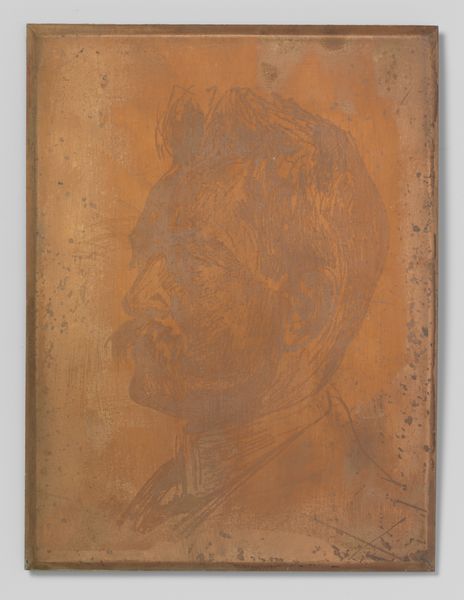
William Evarts Beaman in his Fourth Year after 1885
0:00
0:00
carving, metal, relief, bronze, sculpture
#
portrait
#
carving
#
metal
#
relief
#
bronze
#
carved into stone
#
sculpture
#
carved
#
united-states
Dimensions: 28 3/8 x 26 1/2 in. (72.07 x 67.31 cm)
Copyright: Public Domain
Curator: The profile portrait of William Evarts Beaman in His Fourth Year, dating from sometime after 1885, is a bronze relief by Augustus Saint-Gaudens. Editor: The work has a wistful and classical feel. It evokes something both modern and timeless through its simplicity of form. The material palette of dark bronze against warm wood contributes to its gravity. Curator: Indeed. Saint-Gaudens mastered low-relief sculpture, achieving a remarkable sense of depth despite the limited plane. Notice how the planes shift with changes to the light on the relief. This textural modulation amplifies form. The work provides the viewer with the illusion that the sculpture exists in higher dimension. Editor: These kinds of sentimental family portraits, especially of children, were highly popular during the Victorian era. These works became physical emblems of parental affection and also marked family status, meant to decorate the domestic sphere while subtly reinforcing prevailing social norms. Curator: In this example of relief carving, the careful handling of light and shadow plays such an important role. Take note of the way Saint-Gaudens textures and contours the boy’s hair to direct the viewer’s gaze. We're asked to concentrate on William’s delicate features and his almost ethereal mien. Editor: The work also signals shifts in American society, documenting a time when the middle classes increasingly used art to solidify their status and broadcast it publicly, not unlike sharing family snapshots on Instagram today. It's also difficult not to view this outside the context of high child mortality at the time. The sentimental style reads a bit differently, when the portrait itself could easily become a memorial. Curator: These societal influences become particularly evident upon close inspection of the lettering within the roundel, a design detail that gives visual prominence to the child’s name, along with the inscription noting his age at the time of creation. The wooden frame with floral details also invites contemplation on the sculpture's wholeness and intended aesthetic effect. Editor: Overall, it's a complex interplay between personal sentiment, technical virtuosity, and social display. Curator: Absolutely. The bronze and wood work is far more than merely the depiction of a child—the artist used carefully controlled textural nuances to make this intimate family artifact resound within broader societal spheres.
Comments
No comments
Be the first to comment and join the conversation on the ultimate creative platform.
